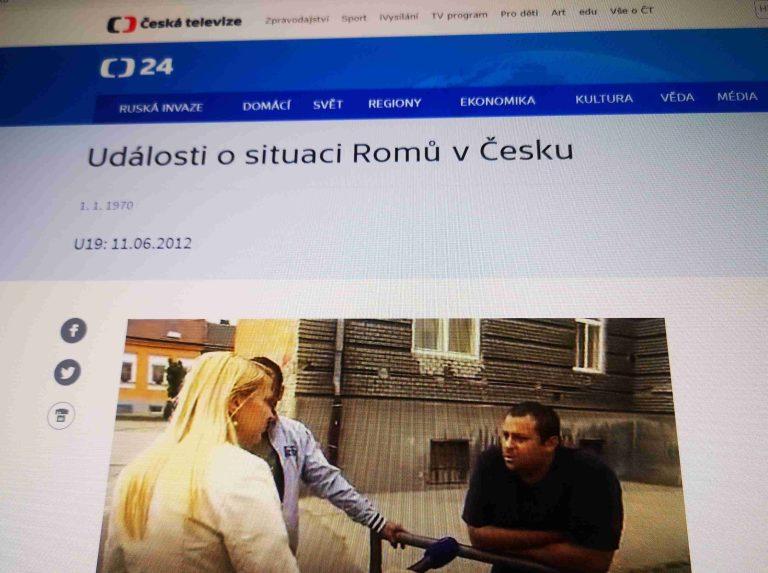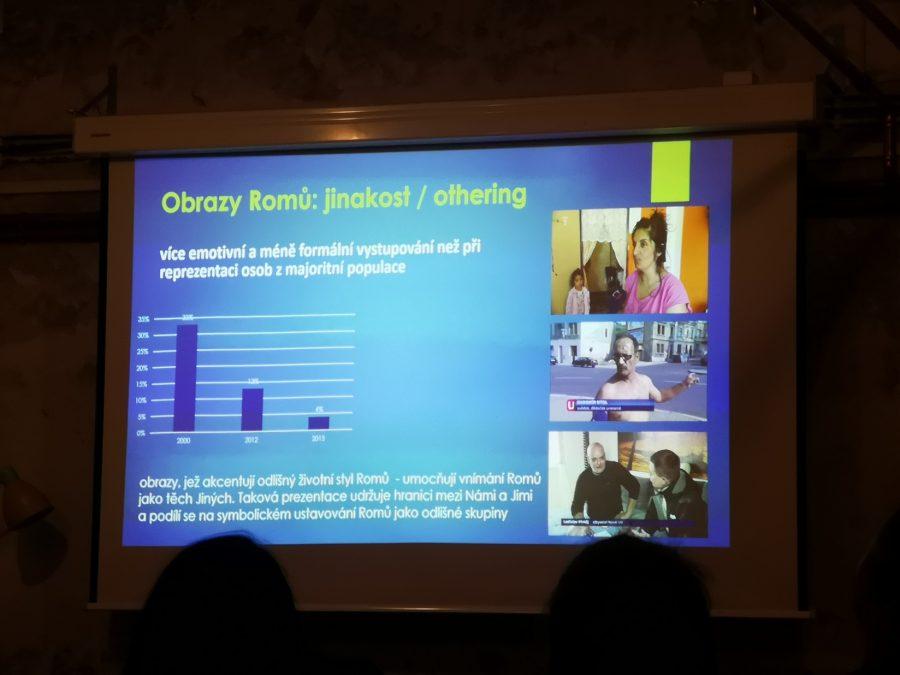New book describes how public broadcaster Czech Television reports on Romani people

On Thursday, 27 April, at Charles University's Hybernská Street Campus in Prague, another lecture and discussion took place as part of the Romani Studies Utopia series held by Romani Studies journal Romano džaniben, where researcher Renata Sedláková presented her book News about Them or about Us: Czech Television's discourse about Romani people (Zprávy o Nich nebo o Nás: zpravodajský diskurz České televize o Romech). "This book is not about Romani people, or rather, they are not in the foreground. It is about the Czech majority society, their attitudes and perceptions of others who are members of a different ethnicity or nationality, and how those others are depicted and represented," the preface states.
What does the way in which the main evening news broadcast represents Romani people tell us about Czech society?
The book documents the transformations in the news reporting undertaken by public broadcaster Czech Television (ČT) over the last two decades. Sedláková sought an answer to the question: “What would we know about the Roma if we knew them just through the broadcasts of the News [Události] program?“ and starts from the assumption that the representation of others holds up a mirror to the majority society that can reveal a lot about the cultural conditioning of that society’s attitudes and behavior.
“This is, therefore, an ancillary question to researching what this main evening news broadcast and its representation of Romani people can tell us about Czech society,” says Sedláková. The change in how ČT reports on Romani people in its news program broadcasts is demonstrated by comparing the situation between the years 2012 and 2015 with the situation in the year 2000.
The majority is “us”, the Roma are “them”
“In this survey, I did my best to draw attention to cases of journalists making use of references in which the longstanding stereotypes about Romani people which are shared by the Czech population resonate,” Sedláková said, adding that already by the year 2000, ČT news reports clearly featured two entities – “the majority, us” and “the Roma, them” – and news items about Romani people emphasized their otherness. The changes since the year 2000 which her research discovered include, for example, less frequent mention of ethnicity in news reports where it plays no role in the story, especially in verbal references, although ethnicity frequently is still emphasized in the accompanying visuals.
Sedláková said the visuals accompanying news reports concerning Romani people are often significantly different from those accompanying reporting about the majority society as conceived by ČT News. The most common images illustrating Romani-related topics are those of children, who feature in more than half of the reports about Roma, while for reports about the majority society, shots of children are not as common and are more exclusively used just for reports about children or topics related to them.

The next most common image material is of Romani youth, while there are almost no images of Romani senior citizens, and footage also shows Romani people in public spaces, but frequently shot from very far away; it is very rare for a shot to frame just one Romani person, usually there are two representatives of the Romani majority at the same time, and half of the cases involve groups of more than 10 people. The News program reports also often show situations in connection with topics related to the Roma which, according to Sedláková, would probably not be approved for broadcast by an editor-in-chief if they concerned the majority society.
“Journalists frequently work with Romani people in their reporting differently than they do with majority-society members. It is not unusual for an interview for the main news broadcast to be conducted with a Romani person leaning on a railing, or standing on a balcony or in a window. Footage of Romani people is used that is downright unflattering. Footage of the majority, unlike footage of the Roma, would never feature a man who was shirtless, with the exception of a report from a swimming pool,” said Sedláková.
The researcher says ČT’s news reporting still persists in depicting Romani people this way. However, over the years the proportion of such reports decreased between the year 2000 and the years 2012 and 2015.
The minority about whom decisions are made
One of the many crucial findings the survey revealed is how ČT News reports on criminality in connection with Romani people. “It turned out that on the subject of criminality, what is most frequently reported is not criminality perpetrated by Romani people, but criminality toward Romani people, who are dominantly in the position of victims in the reporting,” Sedláková said.
I discovered that this is not information about what Romani people are doing, but about what the majority society is doing and how it affects Romani people.
The author gave the example of some politicians’ xenophobic remarks about the Roma. She also analyzed the ČT News reports from a linguistic perspective, investigating the “framing” of the reports, i.e., the news anchors’ introductions to the reportage.
“I discovered that this is not information about what Romani people are doing, but about what the majority society is doing and how it affects Romani people. These are basically reports about the majority society doing its best, working, making decisions, and about the minority receiving those efforts and being decided about,” Sedláková summarized, adding that such reporting, in her view, is distinctly ethnocentric and focuses on messages that are meant to be comprehensible to the majority population.
Sedláková works as a media sociologist in the Communications Studies Department of the Cyril and Methodius Faculty of Theology at Palacký University in Olomouc. She is still continuing her surveys even after publishing her book and is following developments to the present.